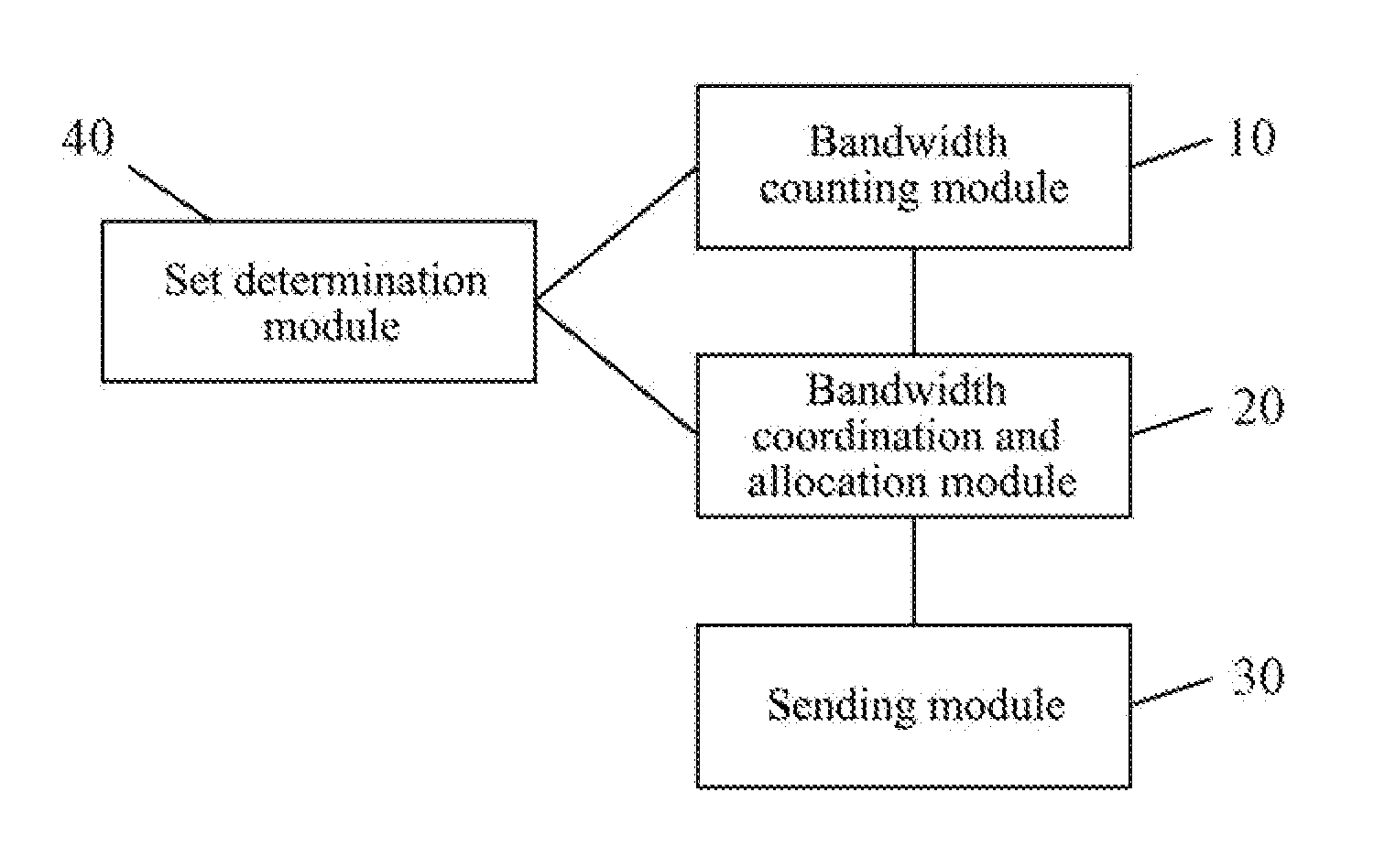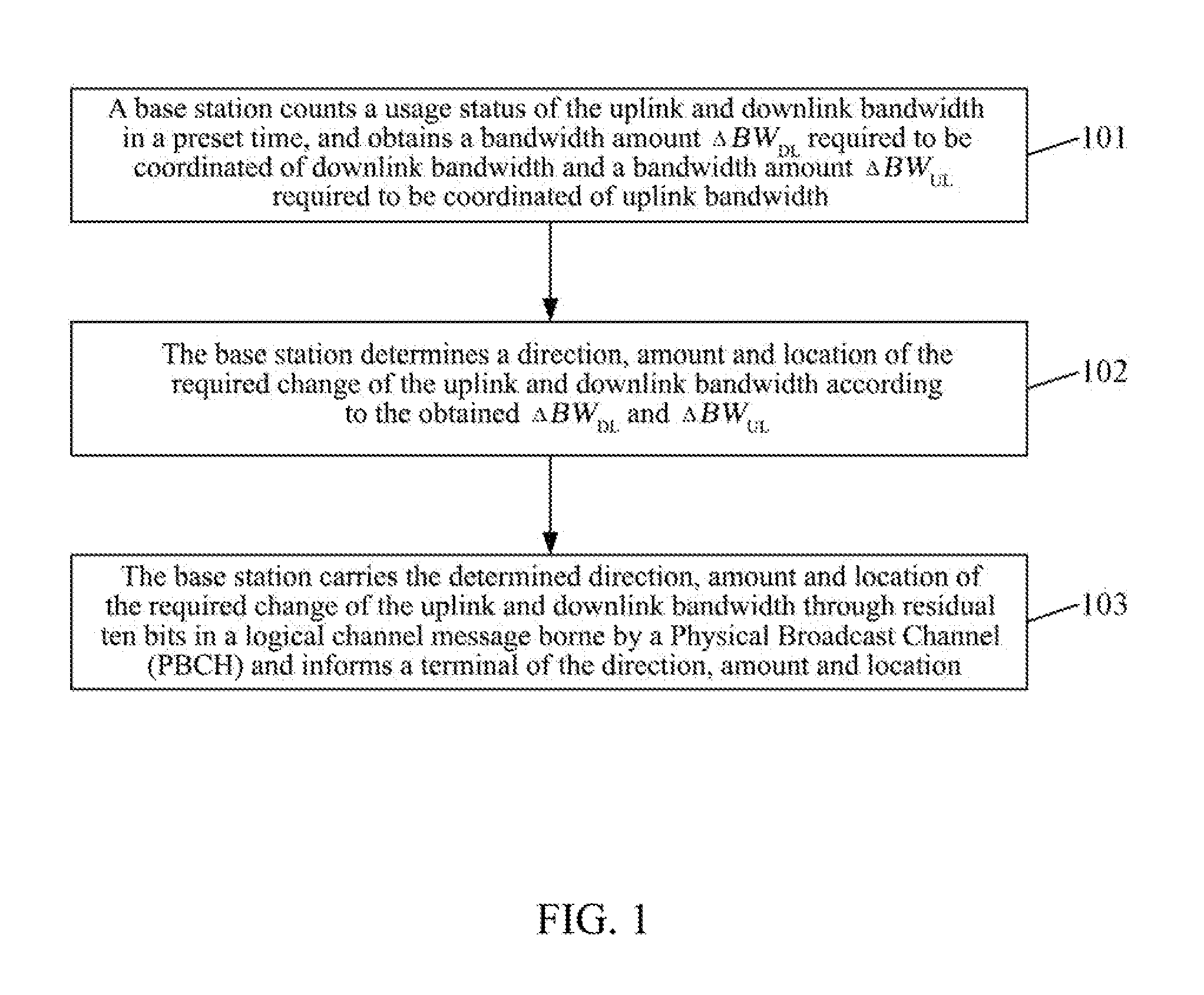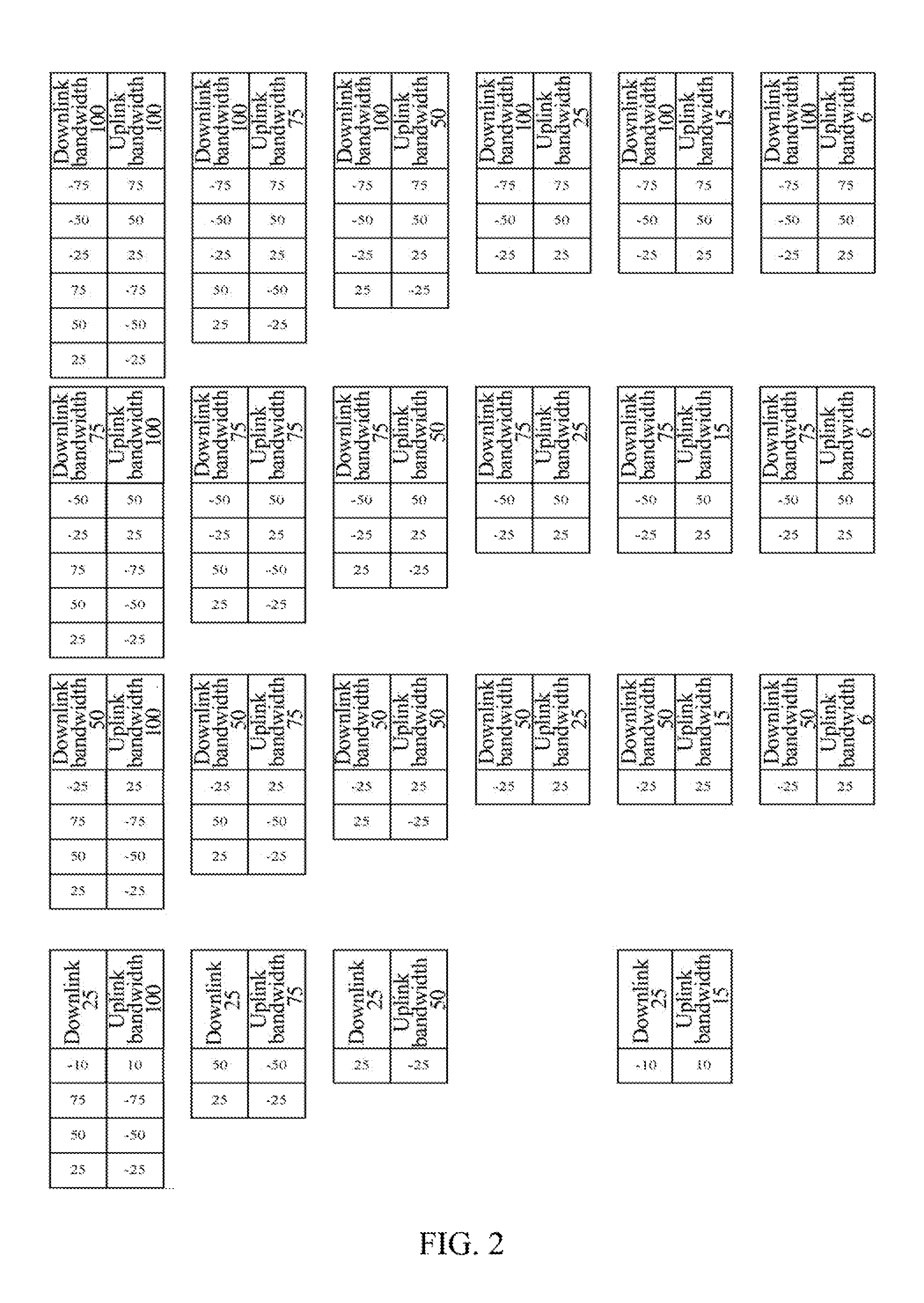Method and Device for Adaptive Adjusting Uplink and Downlink Bandwidth
a bandwidth adjustment and bandwidth technology, applied in the field of radio communication system bandwidth allocation technology, can solve the problems of reducing the utilization rate of frequency spectrum, and limited spectrum resources, so as to improve the utilization efficiency of frequency spectrum, reduce the complexity of implementation, and avoid the effect of modification of the network structur
- Summary
- Abstract
- Description
- Claims
- Application Information
AI Technical Summary
Benefits of technology
Problems solved by technology
Method used
Image
Examples
example one
[0044 of the present invention mainly includes following operations.
[0045]In step 201, a base station counts a usage status of downlink bandwidth, determines that ΔBWDL is also required to be coordinated, where the ΔBWDL is assumed to be less than 0; counts a usage status of uplink bandwidth, determines that ΔBWUL is also required to be coordinated, where the ΔBWUL is assumed to be greater than 0.
[0046]In step 202, according to a high layer information element, namely, dl-Bandwidth and ul-Bandwidth, which are an uplink default bandwidth configuration and a downlink default bandwidth configuration, the base station selects an RB number set which can be coordinated from RB number sets shown in FIG. 2.
[0047]For example, when the downlink default bandwidth configuration (i.e. dl-Bandwidth) is 100 RBs, and the uplink default bandwidth configuration (i.e. ul-Bandwidth) is also 100 RBs, the first set on the first horizontal row in FIG. 2 is selected as the RB number set which can be coordi...
example two
[0055 of the present invention mainly includes following operations.
[0056]In step 301, a base station counts a usage status of downlink bandwidth, determines that ΔBWDL is still required to be coordinated, where that ΔBWDL is assumed to be greater than 0; counts a usage status of uplink bandwidth, determines that ΔBWDL is also required to be coordinated, where that ΔBWUL is assumed to be less than 0.
[0057]In step 302, according to dl-Bandwidth and ul-Bandwidth, and in accordance with instructions of FIG. 1, the base station determines an RB number set which can be coordinated.
[0058]In step 303, bit 10 in FIG. 3 is used to identify that coordination bandwidth is downlink borrowing or uplink borrowing, for example, a value 0 indicates that the bandwidth is borrowed by the downlink (that is, the bandwidth is borrowed from the uplink), and a value 1 indicates that the bandwidth is borrowed by the uplink (that is, the bandwidth is borrowed from the downlink); bit 8 and bit 9 in FIG. 3 ar...
example three
[0065 of the present invention mainly includes following operations.
[0066]In step 401, a base station counts a usage status of downlink bandwidth, determines that ΔBWDL is also required to be coordinated, where that ΔBWDL is assumed to be less than 0; counts a usage status of uplink bandwidth, determines that ΔBWUL is also required to be coordinated, where that ΔBWUL is assumed to be greater than 0.
[0067]In step 402, according to dl-Bandwidth and ul-Bandwidth, and in accordance with instructions of FIG. 1, the base station determines an RB number set which can be coordinated.
[0068]In step 403, bit 1 in FIG. 3 is used to identify that coordination bandwidth is downlink borrowing or uplink borrowing, bit 2 and bit 3 in FIG. 3 are used to describe the amount of borrowed bandwidth; and the location of borrowed RB is pre-configured.
[0069]In step 404, if an absolute value of ΔBWDL is less than or equal to an absolute value of ΔBWUL, and the absolute value of ΔBWDL is greater than or equal...
PUM
 Login to View More
Login to View More Abstract
Description
Claims
Application Information
 Login to View More
Login to View More - R&D
- Intellectual Property
- Life Sciences
- Materials
- Tech Scout
- Unparalleled Data Quality
- Higher Quality Content
- 60% Fewer Hallucinations
Browse by: Latest US Patents, China's latest patents, Technical Efficacy Thesaurus, Application Domain, Technology Topic, Popular Technical Reports.
© 2025 PatSnap. All rights reserved.Legal|Privacy policy|Modern Slavery Act Transparency Statement|Sitemap|About US| Contact US: help@patsnap.com



